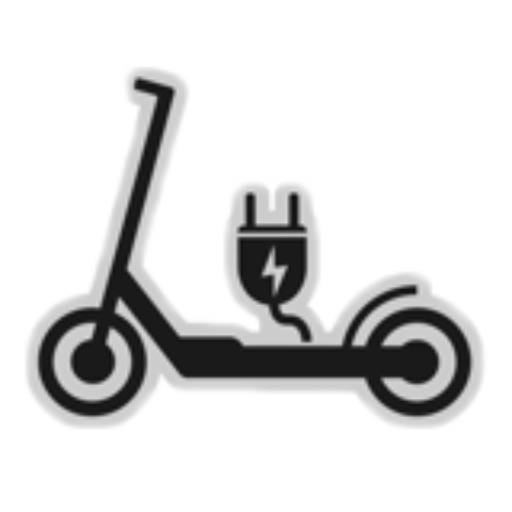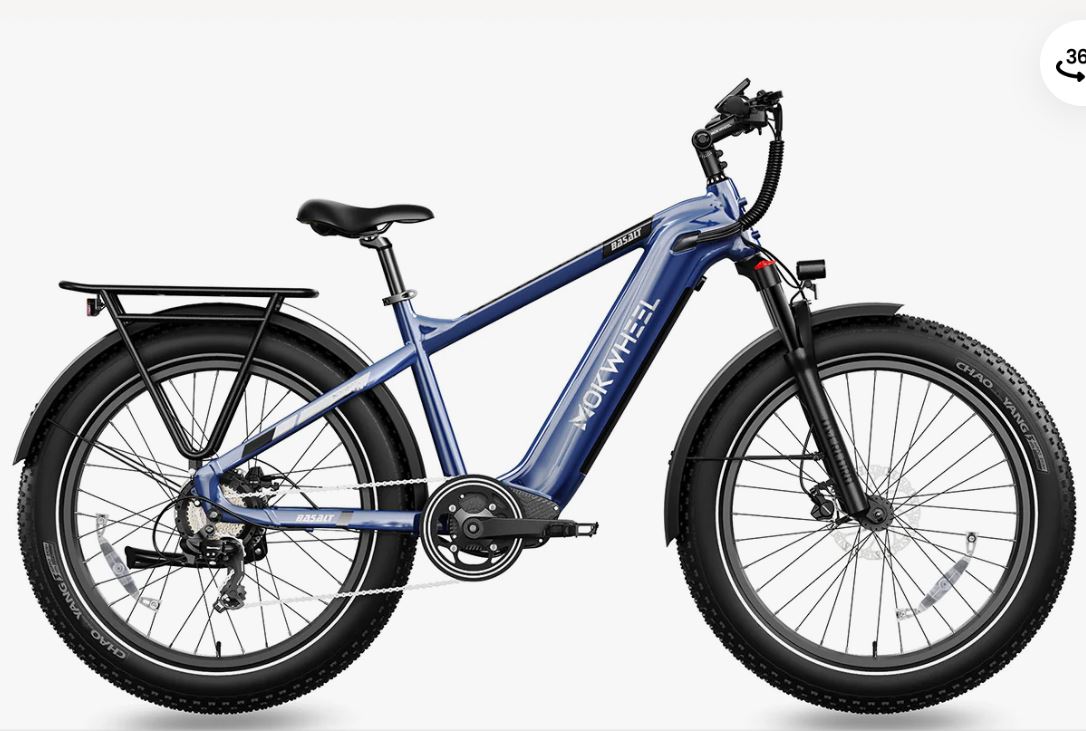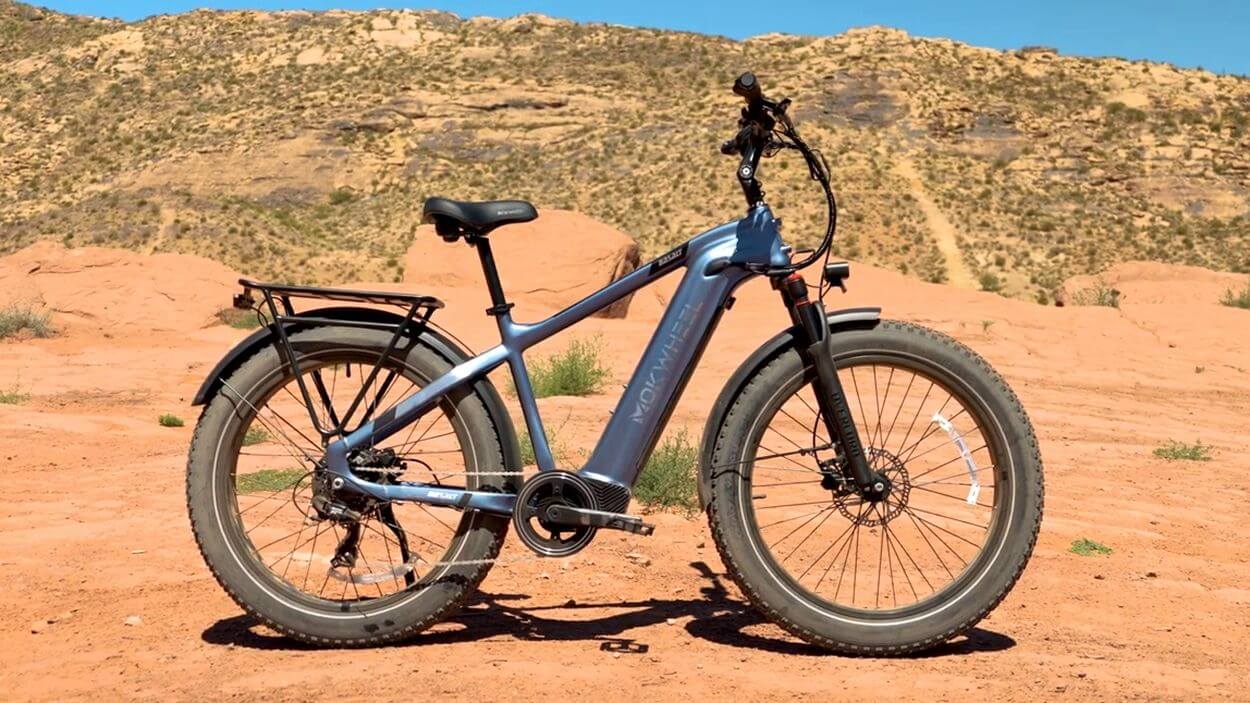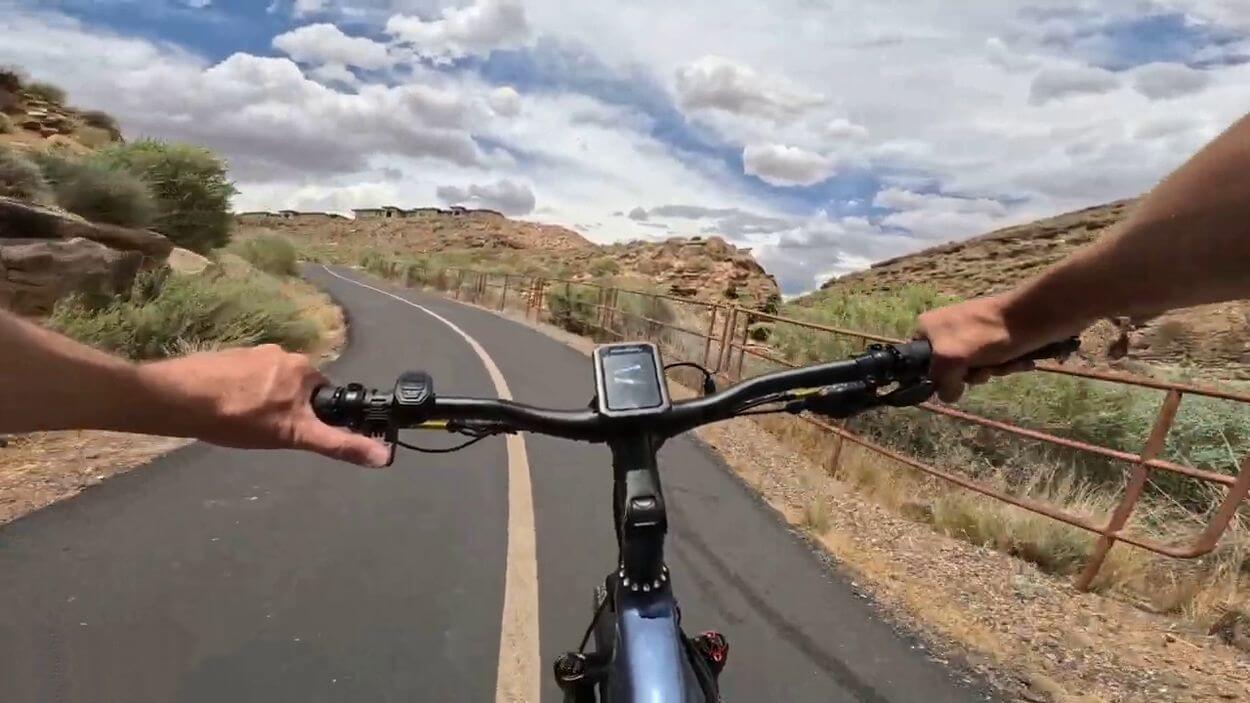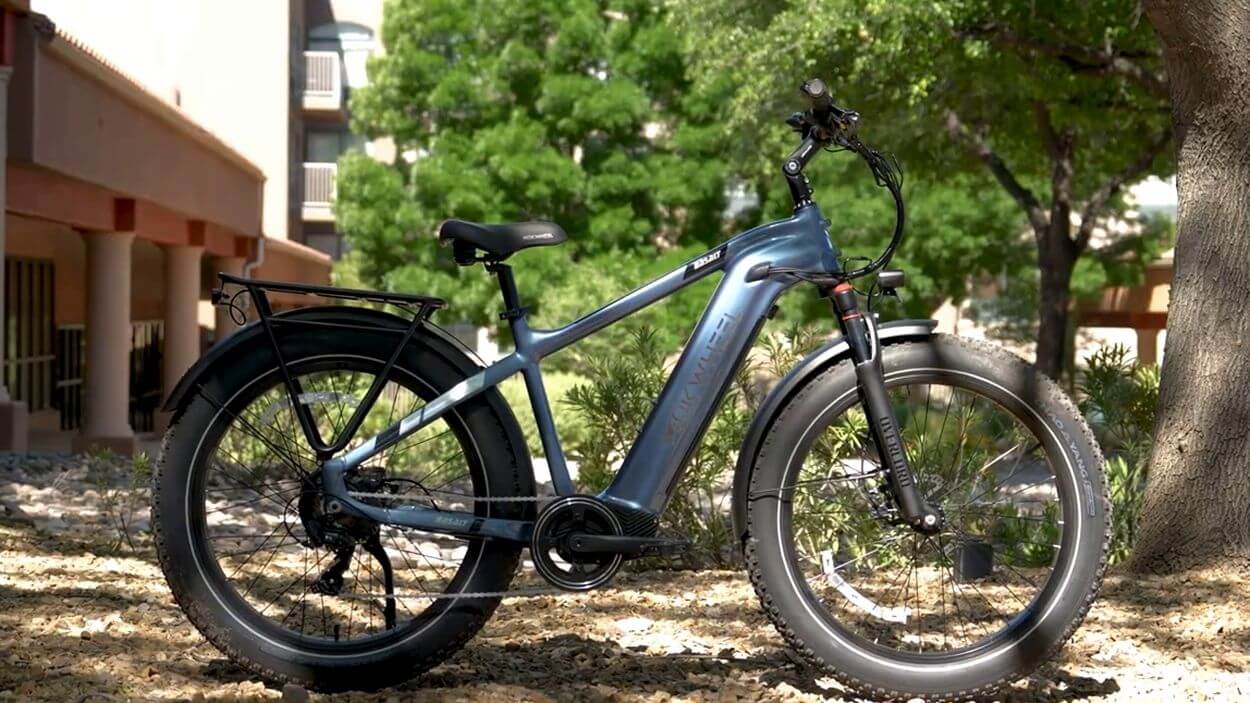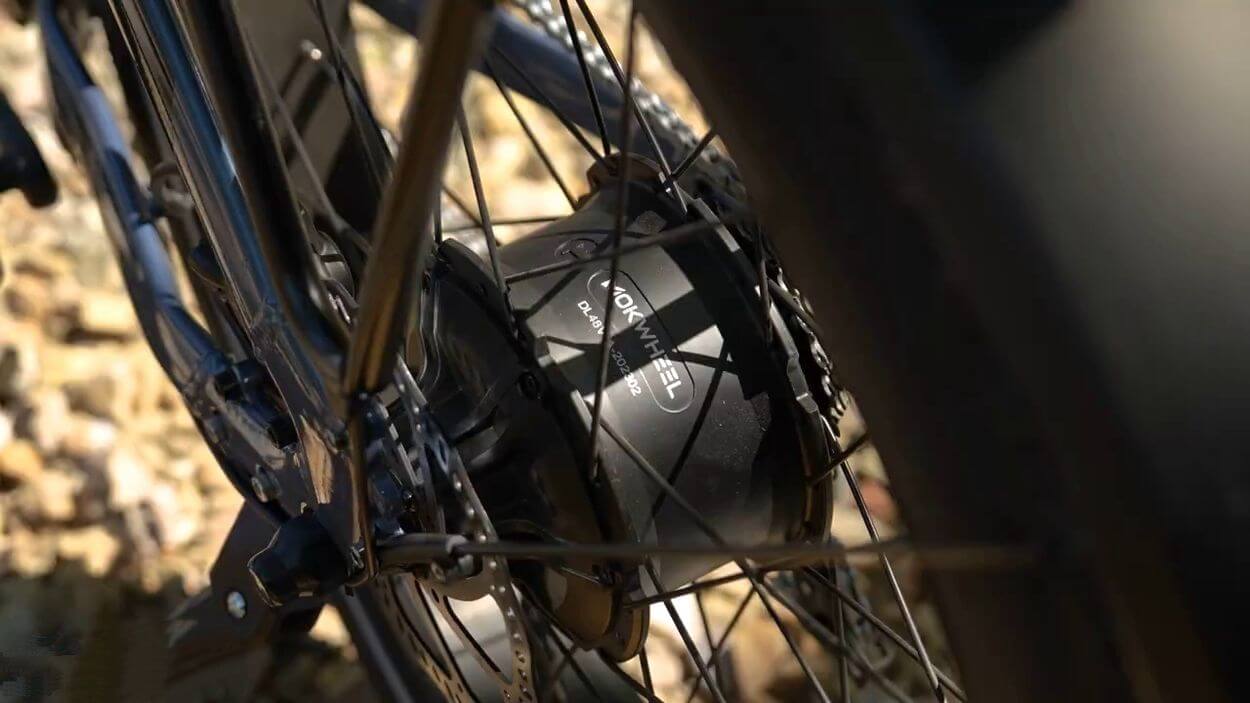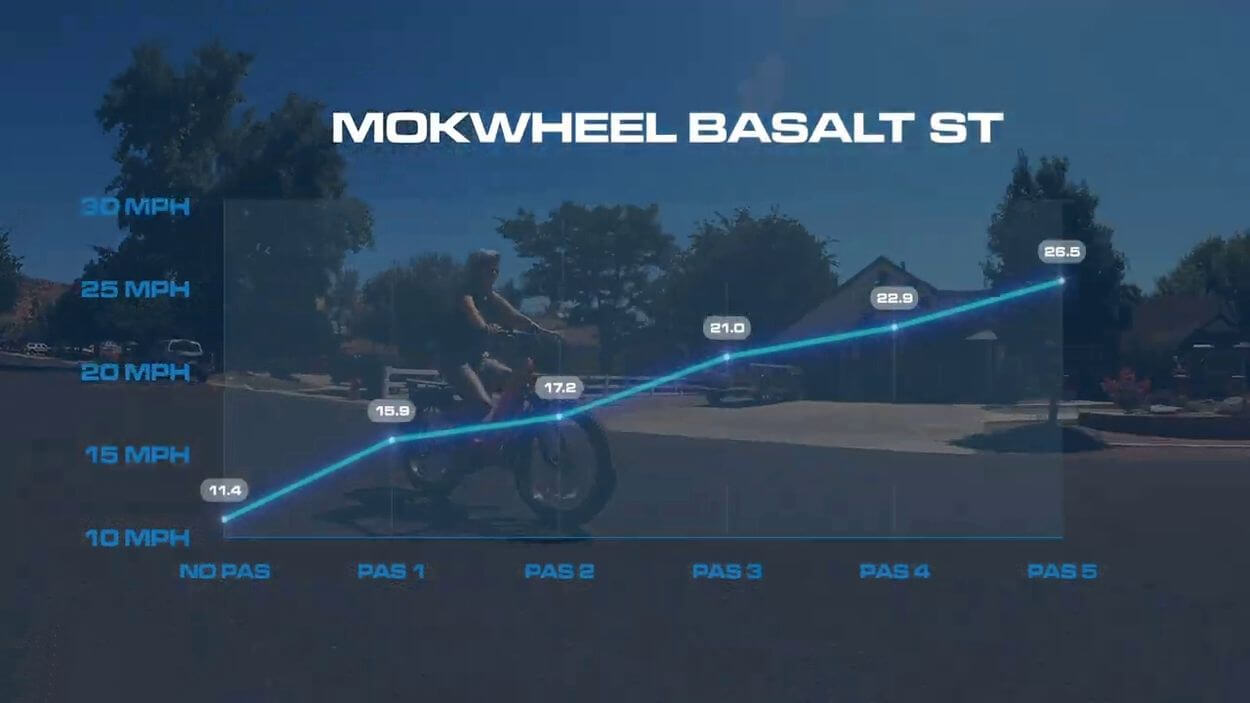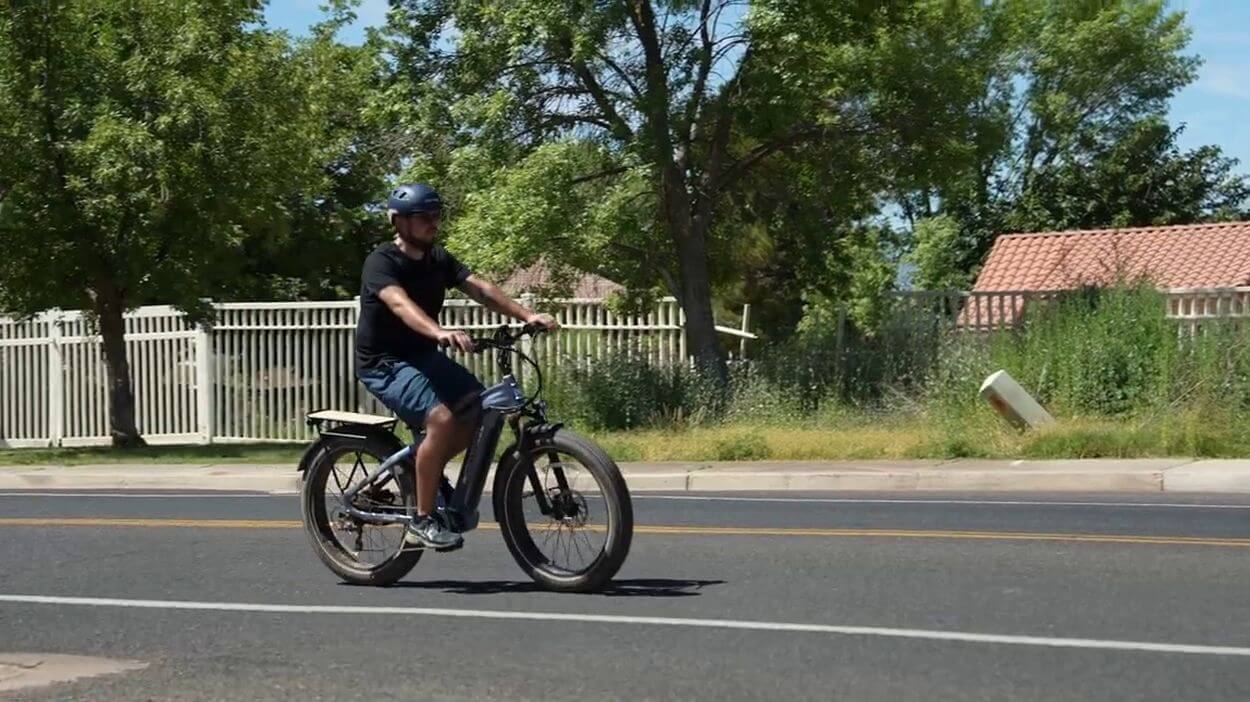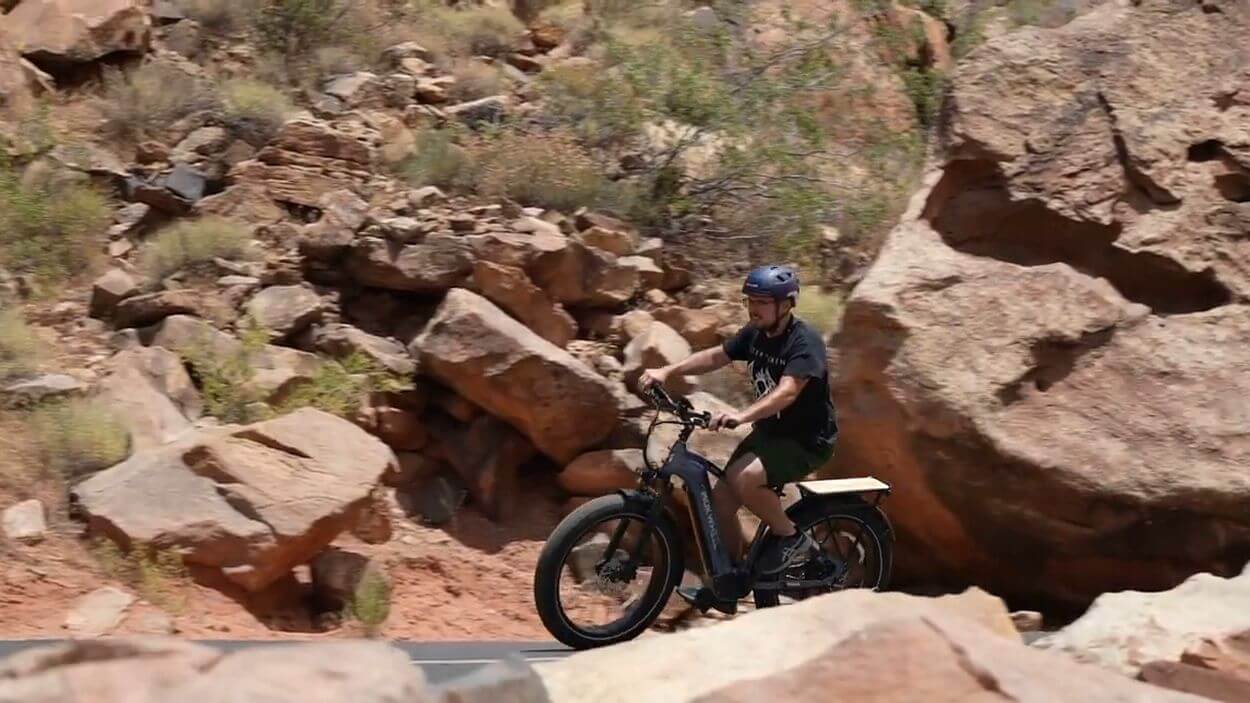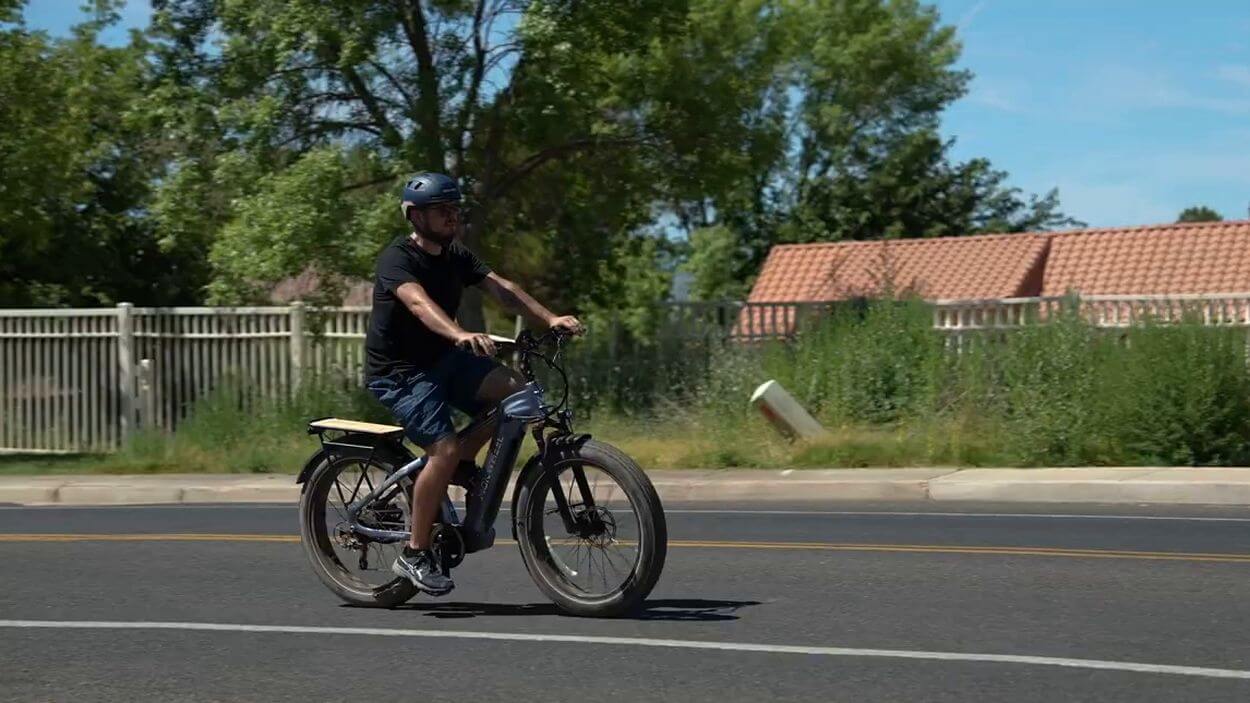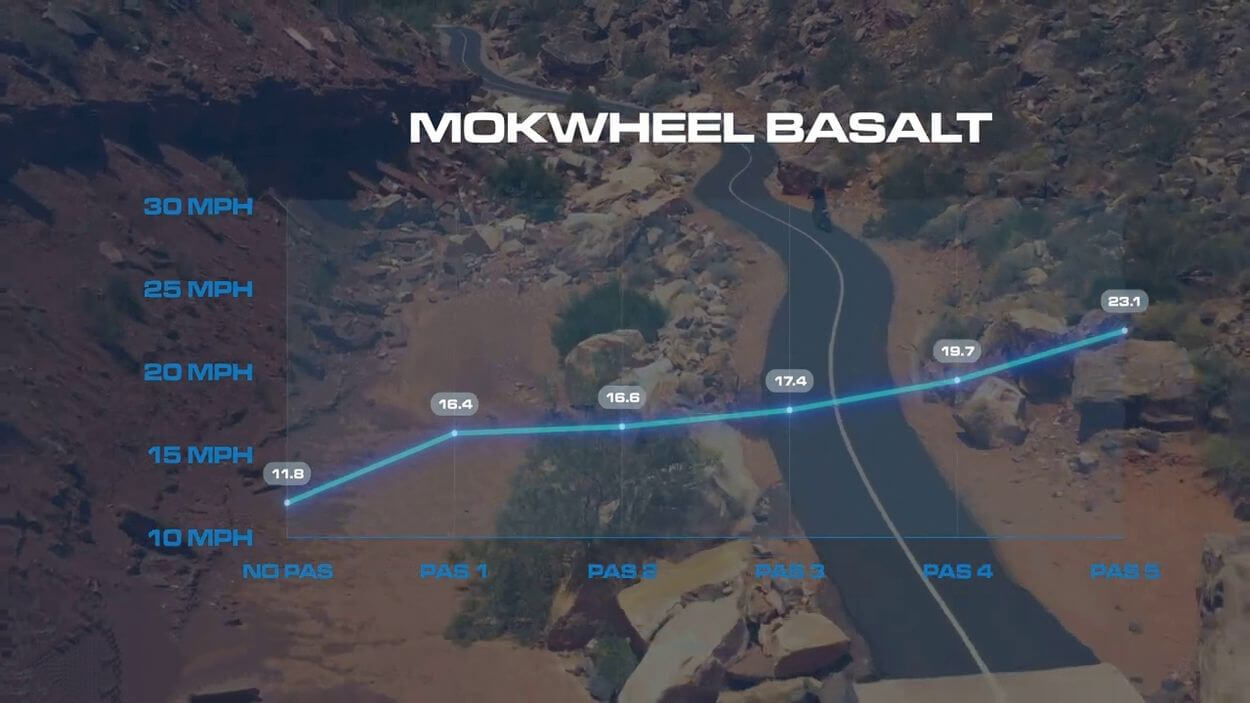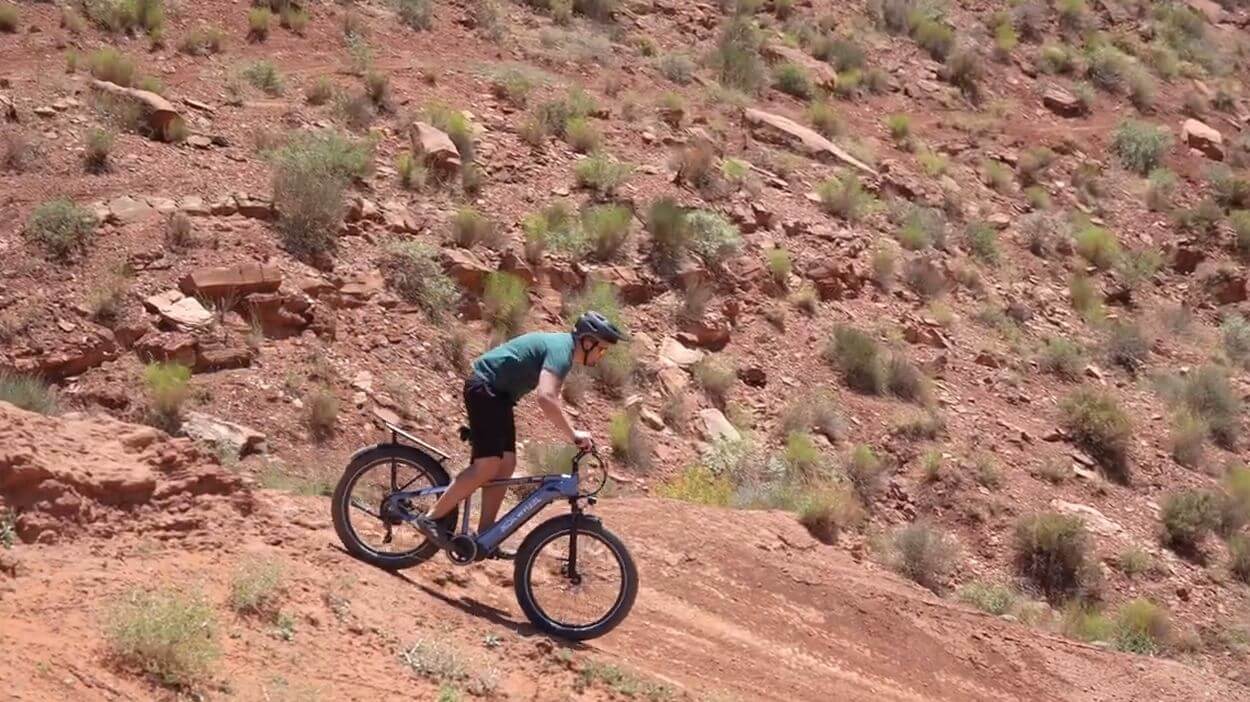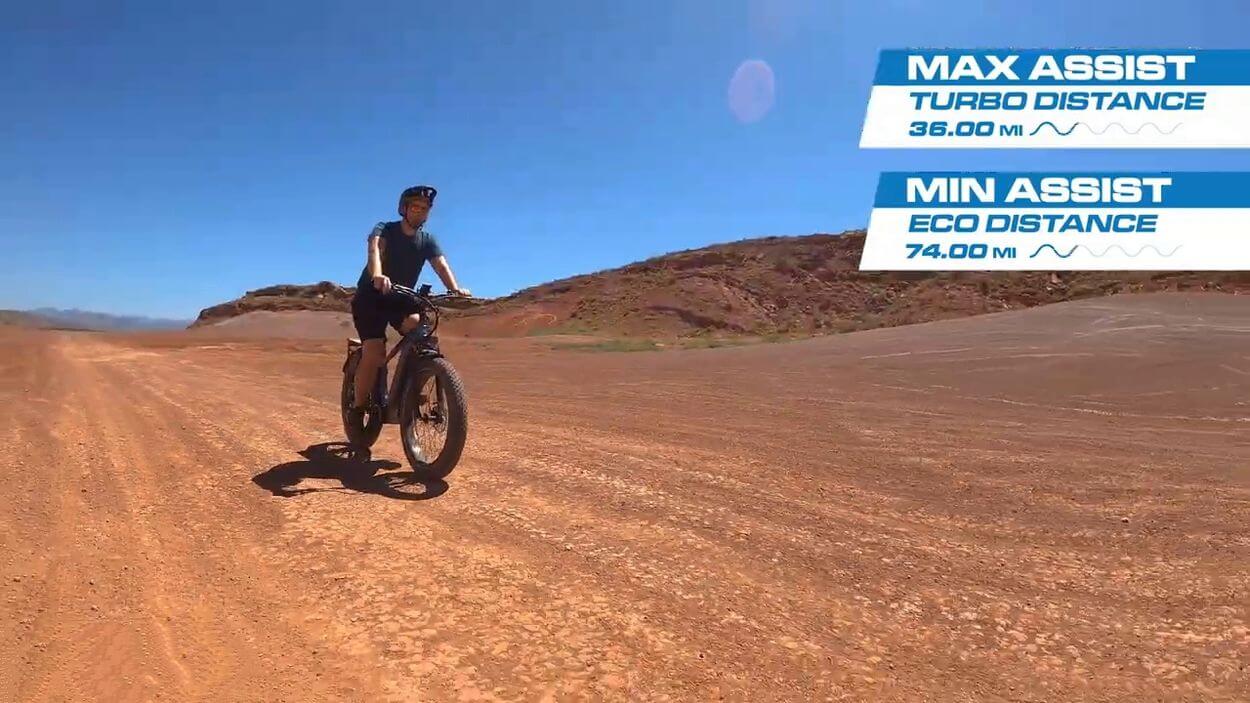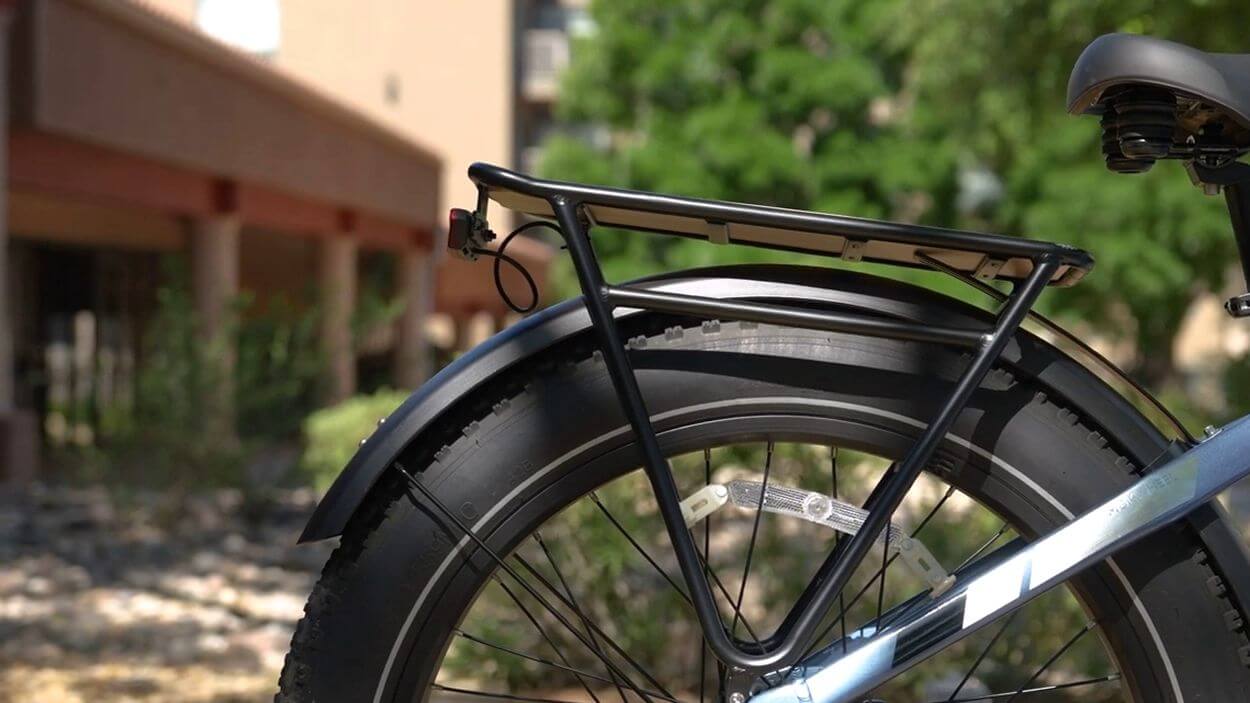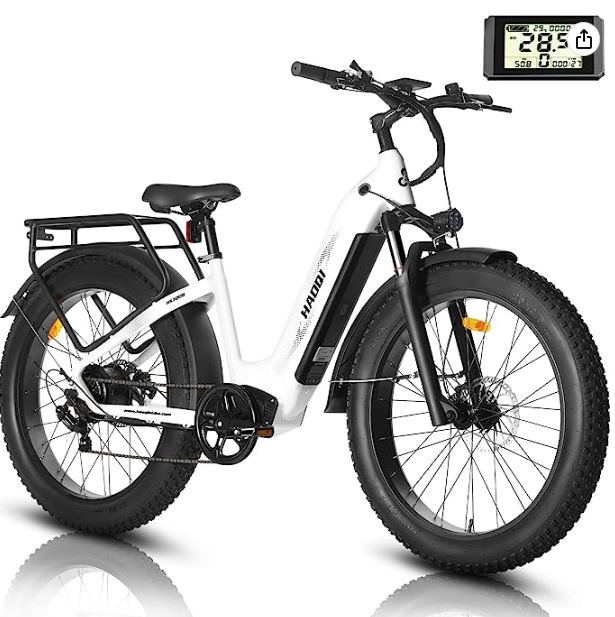The Mokwheel Basalt has carved a niche for itself as an ideal Fat Tire ebike for camping, a title that the original version held with pride. With the arrival of this updated version, the question arises: can it maintain its position as the best e-bike for camping? Let’s embark on a ride and uncover the answer.
The most significant change in this updated Basalt model is the inclusion of a torque sensor in place of the previous cadence sensor. This modification results in a substantial improvement in the bike’s overall ride experience. The torque sensor enables the motor to respond to your pedaling effort, offering a smoother and more intuitive power delivery. This eliminates any jerky sensations that might have been present with the previous sensor, enhancing the bike’s ride quality.
The Mokwheel Basalt is available at a discounted price of $1,899.00, down from its regular price of $2,199.00. This price reduction presents a great opportunity for riders to access the Basalt’s impressive features and capabilities at a more affordable cost.
With these attributes in mind, let’s explore the Basalt’s performance during the test and see how it stands up to its reputation as the ultimate camping e-bike.
| Frame | 6061 Aluminum Alloy |
| Motor | 48V 750W Brushless Rear Hub |
| Speed Class | Up to 28 mph on Level 5 PAS |
| Tires | CHAOYANG 26x4.0" |
| Gearing | Shimano 7-Speed |
| Throttle | Thumb Throttle |
| Front Fork | 110mm Adjustable Suspension |
| Display | LED Integrated |
| Battery | Samsung 48V 19.6Ah |
| Range | 60~80miles |
| Weight | 79 lbs |
Design and Build Quality
The Mokwheel Basalt stands out in terms of its impressive design and build quality, offering a delightful ride experience that encompasses comfort, stability, and capability across various terrains. The bike’s ride quality has been noted as being excellent, which can be attributed to its thoughtful design and construction.
One of the key highlights of the Basalt’s design is its emphasis on comfort. The ride comfort has been praised as it manages to provide a smooth and enjoyable experience, even on challenging surfaces. This comfort is further enhanced by the stability that the bike offers, allowing riders to maintain control and confidence, especially when tackling rough or uneven terrain.
During testing on double track trails in desert environments, the Mokwheel Basalt demonstrated its versatility and capability. While lacking a rear suspension, the bike still performed admirably in such conditions, though the recommendation of a suspension seat post for more regular off-road riding was noted. This showcases the bike’s adaptability and its ability to handle different terrains with grace.
The design of the Basalt extends to its handlebars, which measure 720 millimeters in width. This wider measurement compared to many fat tire bikes (typically equipped with 680 millimeter handlebars) contributes to better control and handling. The added 40 millimeters provides a sense of stability and control, allowing riders to navigate trails and paths with greater ease.
An adjustable stem is a thoughtful addition to the bike’s design, offering riders the flexibility to adjust their riding posture. Given that the Basalt is available in a single frame size, this adjustable stem allows for customization, ensuring that riders of varying heights can find a comfortable position.
While the design and build quality are commendable, there were a couple of minor areas where personal preferences diverged. The saddle received mixed opinions, with some finding it comfortable while others noted that the shape, particularly the wider rear end, didn’t suit their preferences. Similarly, the grips were mentioned as an element that some riders would change out for a more standard ergonomic rubber grip, as the included gel bumps weren’t universally favored.
Despite these personal preferences, the Basalt’s overall handling was found to be predictable and well-suited for its size. Weighing nearly 80 pounds, the bike’s maneuverability was surprisingly good, highlighting its agility despite its larger build.
However, it’s important to stress that while the Mokwheel Basalt can handle rougher terrains and trails, it’s not intended to be a full-fledged mountain bike. There are limits to the types of trails and obstacles it can conquer. Keeping this distinction in mind will ensure that riders make the most of the Basalt’s capabilities while not pushing it beyond its intended use.
Mokwheel Basalt: Performance and Driving Test
The Mokwheel Basalt is a remarkable fat tire e-bike that exhibits exceptional performance across various terrains, highlighted by its powerful motor and impressive speed capabilities. Its robust features make it adept at tackling challenging trails, as evidenced by its performance on the Hellhole trail. Equipped with a potent 750-watt motor boasting 90 Newton-meters of torque, the Basalt’s capabilities place it on the higher end of the torque spectrum. This torque advantage is particularly advantageous when navigating steep hills and accelerating from a standstill, making it a potent contender in the throttle-only portion of tests.
While the Basalt may not have set new records, its performance was among the best in its category. This emphasizes the bike’s prowess in handling various challenges while maintaining a comfortable and controlled riding experience. The combination of substantial torque, motor power, and well-balanced acceleration solidifies the Basalt’s ability to handle a wide range of terrains with ease.
In a comprehensive speed test, the Basalt exhibited its versatility across different pedal-assist settings (PAS). The recorded average speeds were as follows:
- No motor assistance: 11.8 mph
- PAS1: 16.4 mph
- PAS2: 16.6 mph
- PAS3: 17.4 mph
- PAS4: 19.7 mph
- PAS5: 23.1 mph
Notably, the bike’s performance exceeded Class 3 e-bike regulations, capable of reaching a maximum speed of 28 mph. However, discrepancies were observed between the step-through and high-step versions of the bike, suggesting that rider-specific factors influenced the recorded speeds due to the bike’s torque sensor response. While data analysis provides insights, personal experiences and riding styles hold more sway in assessing the bike’s true performance.
I performed the hill test on the Mokwheel Basalt, and I’m going to describe my experience as I tackled the test hill both using the bike’s throttle and pedaling up in PAS5. Let’s dive into the details of my journey:
Throttle Test:
I embarked on the throttle test with the Mokwheel High Step model. Having previously reviewed the step-through version, I had high expectations for this iteration. The Basalt’s powerful rear hub motor propelled me up the hill at around 11-12 mph, which is a solid performance in the realm of Fat Tire e-bikes. I maintained a steady pace of 10-11 mph as I tackled the ascent, a testament to the motor’s capability.
Despite the bike’s hefty build and four-inch Fat Tires, it handled the hill with ease, showcasing its ability to conquer steep terrains such as the Hellhole trail. The bike’s weight, which hovers around 75 pounds, didn’t hinder its performance in climbing a challenging incline like Hellhole. The throttle assistance was smooth and comfortable throughout the climb, demonstrating the Basalt’s prowess as a powerful hill climber.
As I neared the top, I powered through the last section using the throttle without any hitches, maintaining an impressive speed. I even managed to hit a speed of 18.3 mph, illustrating the Basalt’s strong finish and excellent performance on the hill test.
Pedal Test:
Next up was the pedal test on the same Hellhole hill using the Mokwheel Basalt. Anticipating a stellar performance, I began pedaling with confidence. The bike lived up to expectations, swiftly ascending the hill with remarkable ease. Even on steep sections, I maintained a steady speed of 14-15 mph, highlighting the Basalt’s powerful motor and efficient pedal-assist system.
The bike’s rapid-fire shifters enabled seamless gear changes, ensuring I could tackle the hill without losing momentum. Though there was a slight drop in speed to around 12-13 mph during steeper stretches, shifting gears quickly brought me back up to the higher speeds.
My experience on the pedal test reaffirmed the Basalt’s capabilities as a potent hill climber, effortlessly conquering challenging terrains while maintaining a comfortable and smooth ride.
Descending:
Descending the steep Hellhole hill was an equally important part of the test. The Basalt’s performance during the descent showcased its braking system, particularly its Tektro hydraulic disc brakes with brake cut-off on the motor. Riding downhill at around 10-15 mph, I demonstrated caution, acknowledging the need to control speed on such a steep gradient.
The bike’s brakes exhibited excellent response and control, offering a safe and secure downhill experience. The brakes were notably quiet, and I maneuvered through the descent without any issues. Navigating turns and maintaining a controlled pace, I was pleased with the braking performance of the Basalt.
During off-road testing, the Basalt demonstrated the anticipated speed and power synonymous with Fat Tire e-bikes. However, what truly sets it apart as the best e-bike for camping are its accessory offerings. The bike comes equipped with a power inverter, allowing you to tap into the battery’s power to charge devices while on the move.
Brake test
During our brake test, the Mokwheel Basalt demonstrated satisfactory but not exceptional performance. However, it’s important to note that the test results were influenced by external factors and not necessarily indicative of the bike’s true braking capabilities.
In the brake test, the Basalt achieved an average stopping distance of 25 feet 4 inches. While this result might not appear stellar, it’s crucial to acknowledge that the test conditions weren’t ideal. We unintentionally conducted the test without checking the brakes beforehand, resulting in a somewhat “mushy” feeling during braking. This could have potentially affected the bike’s overall braking performance.
Comparatively, we also tested the step-through version of the Basalt, which exhibited better braking performance with an average stopping distance of 23 feet 11 inches. This result is slightly closer to our average for all fat tire bikes tested, although it still falls within the expected range of outcomes.
The Basalt’s brake system is designed by Tektro, using the E350 model and paired with 180-millimeter rotors. Despite the bike’s weight of approximately 79 pounds, the brakes retained a solid feel and response. However, the test results were likely affected by the bike’s weight, suggesting that the braking system’s capabilities might be even better than indicated.
Battery and Range
The range test revealed a standout aspect of the Mokwheel Basalt’s performance, showcasing its impressive capabilities in this area. The bike’s stellar performance in this regard can be largely attributed to its massive 941 watt-hour battery, a key factor that sets it apart. Mokwheel advertises a range between approximately 60 and 80 miles, and our range test results fell within the range of 36 to 74 miles, contingent on the chosen pedal assist level.
In conducting our range test, a few factors require clarification. We conducted our tests on a network of multi-use paths that featured a variety of hills. Furthermore, we tested the Basalt twice, once with the highest pedal assist setting and once with the lowest. This comprehensive approach aimed to encompass different scenarios and provide a more complete understanding of the bike’s range capabilities.
It’s important to note that our range results were affected by the terrain. The hills along our testing route exerted an impact on the measured range, particularly on a test that involved an elevation gain of nearly 1600 feet. In scenarios with fewer hills, it’s reasonable to assume that the Basalt’s range would be even more impressive.
An interesting observation from our tests pertains to the efficiency of the bike’s torque sensor versus the older version with a cadence sensor. Surprisingly, the older version with the cadence sensor, along with a different rider, achieved better results in PAS1, managing to cover approximately 85 miles. However, despite the increased power consumption of the newer torque sensor-equipped version, it covered the testing distance significantly faster and more efficiently.
Comparing the mathematically expected duration of our PAS5 test with the actual result, it’s clear that the motor drew less power than anticipated. This highlights the Basalt’s efficiency and the effectiveness of its power management system.
Conclusions
I have no doubt that the Mokwheel Basalt will continue to maintain its esteemed position on our list of the best Fat Tire e-bikes. The addition of optional Power Station accessories, such as the power inverter and solar panels, elevates this bike to a whole new level. While the Basalt is already a solid and capable bike on its own, the incorporation of these accessories feels like a natural progression and an excellent decision for potential buyers. In fact, considering the versatility and advantages they bring, opting for these additions seems like a clear choice for anyone considering the Basalt.
Speaking more broadly, I’d encourage Mokwheel to ensure that the bike adheres to the appropriate Class 2 or Class 3 e-bike limitations, aligning with its advertised specifications and complying with legal regulations.
If Mokwheel chooses to stick with the Class 3 limitation for pedal assist, it could benefit from an eight-speed cassette with a broader range of gears. This adjustment could help mitigate ghost pedaling and enhance overall performance.
In a broader perspective, the Basalt truly embodies versatility. It’s a bike that comfortably accommodates commutes to work, boasting the range to tackle long journeys. It’s also equipped to venture into the wilderness, even without the solar panels. In PAS5 mode, the Basalt offers an exhilarating experience for those seeking top speeds, and it handles steep inclines without breaking a sweat. Overall, the Basalt is a joy to ride, thanks to its adaptability and fun factor.
I trust that you found this review both informative and helpful. Your support is greatly appreciated. If you’re interested in purchasing the Basalt, please use the provided link to support us. Remember to like this video, subscribe to our channel, and feel free to share your thoughts in the comment section. Thank you for joining me today. I’m John with Electric Bike Report, and this is the new and improved Mokwheel Basalt.
